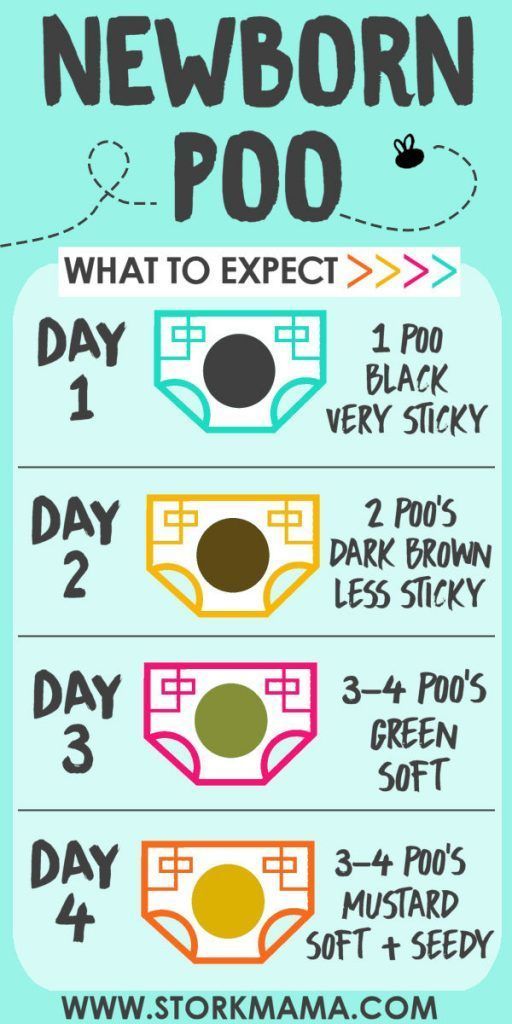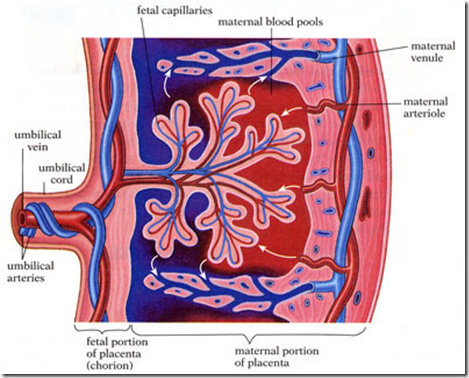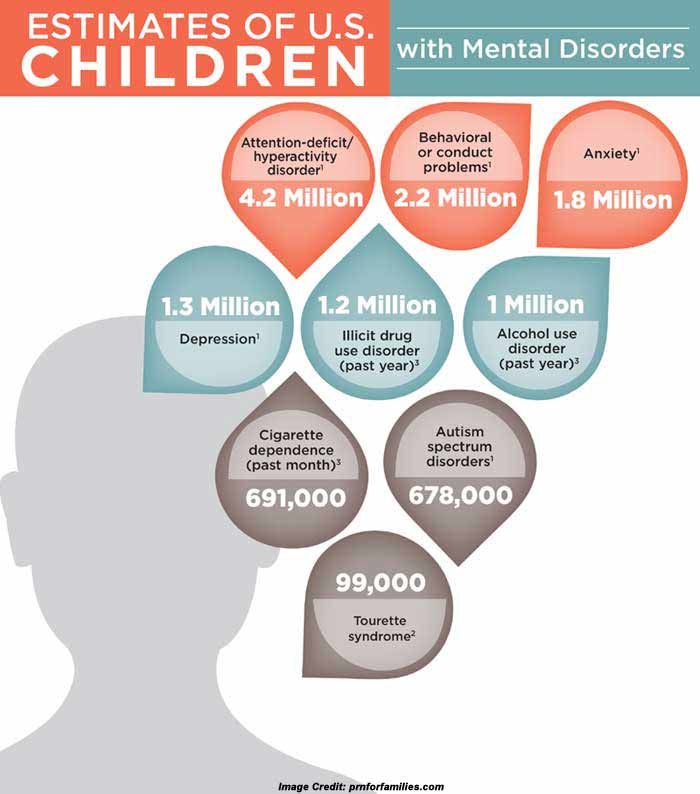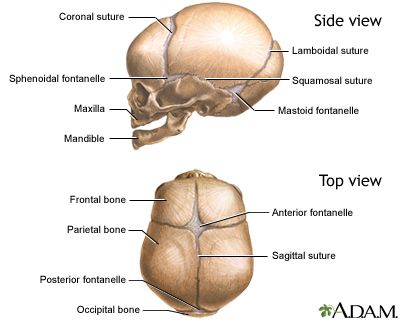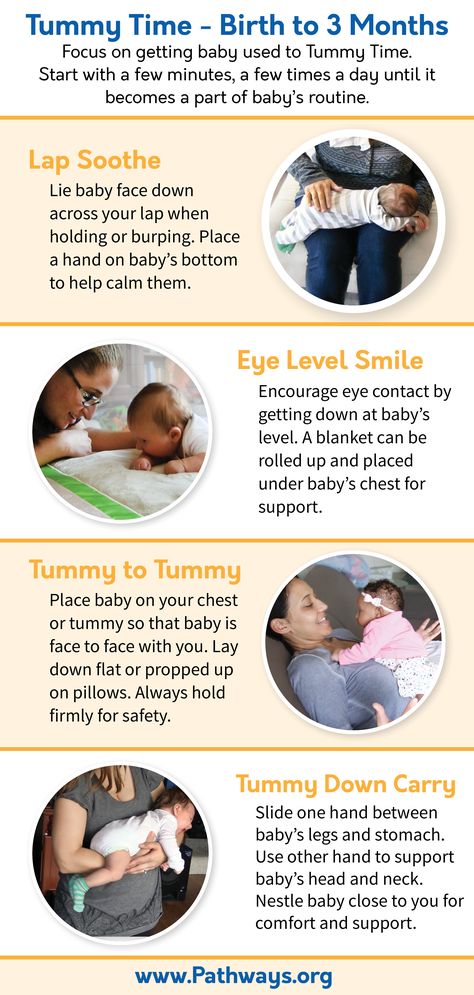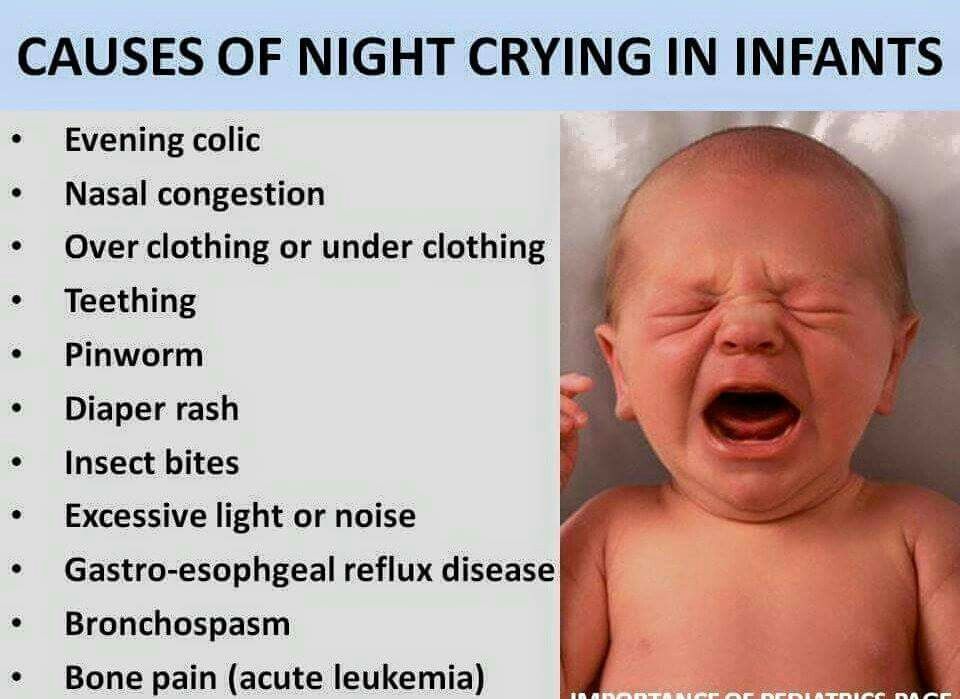Newborn poop problems
Symptoms, Treatment and When to Call a Doctor
Nationwide Children’s Hospital
Constipation (con-sta-PA-shun) in infants can worry parents. Most of the time, your baby is not really constipated. They may not have developed a routine for pooping yet. Some babies do not develop a bowel movement (BM) pattern for a while.
An infant’s BM pattern can change if their diet changes, like switching from breastmilk to formula, starting solid foods, or drinking less formula than usual. If your baby’s stool (poop) is not soft or easily passed, then they may be constipated.
In rare cases, constipation may be caused by a lack of nerves going to the intestines or by a problem with the way the intestine formed at birth. Your baby can be tested for these conditions if your health care provider feels it is needed.
Signs of Constipation
- less stools than their usual pattern
- straining more than normal to have a bowel movement
- a change in how the stool looks from soft and mushy to:
- small, hard pebbles, or like a large, round golf ball
- loose and watery
- abdomen (belly) bloated or swollen with gas
- painful cramps
Treatment
- If your baby is not eating baby food yet, you may give 1 to 2 ounces of 100% fruit juice (pear, prune, cherry, or apple) once a day.
Stop the juice if their stools become too loose.
- If they are old enough to eat baby foods, feed them pureed pears, peaches, or prunes instead of giving them juice.
- If your baby eats cereal, it may help to give oatmeal, wheat, or barley cereal. Rice cereal can cause constipation in some children.
- Sometimes giving your baby a warm bath to relax them or exercising their legs, like riding a bicycle, will help stimulate the bowels to move (Picture 1).
- If it has been a few days since your baby has pooped and the juice or pureed food has not worked, then you can try a glycerin suppository. Place your baby on their back. Gently push the suppository into their anus (bottom). Suppositories are meant for occasional use.
- Contact your baby’s health care provider before giving them laxatives, baby mineral oil, or enemas to treat constipation.
Medical Therapy
Your child’s health care provider may order the following treatments:
- Give your child medication.

- Check your child’s temperature using a digital, rectal thermometer. Put a small amount of petroleum jelly (Vaseline®) on its tip before inserting into the rectum. Taking a rectal temperature may stimulate the baby to pass stool.
When to Call the Health Care Provider
Call the health care provider if any of the following occurs:
- Your baby is irritable and seems to be having stomach pain. Infants will pull their legs up to their stomach and cry when they are in pain.
- Your baby has constipation and develops vomiting, and their belly looks like it is bloated or filled with gas.
- You see blood in their stool.
- Their constipation does not get better with treatment.
If you have any questions or concerns, call your baby’s health care provider.
Constipation: Infant (PDF), Spanish (PDF), Somali (PDF), Arabic (PDF), Nepali (PDF)
HH-I-14 ©Copyright 1984, Revised 2022, Nationwide Children’s Hospital
You Might Also Be Interested In
Blog
Pelvic Floor Physical Therapy: How It Can Help
Podcast
PediaCast 503 Your Childs Stomach Part 1
Blog
Senna-Based Laxatives for Kids’ Constipation: Are They Safe?
Constipation in infants and children: MedlinePlus Medical Encyclopedia
Constipation in infants and children occurs when they have hard stools or have problems passing stools. A child may have pain while passing stools or may be unable to have a bowel movement after straining or pushing.
A child may have pain while passing stools or may be unable to have a bowel movement after straining or pushing.
Constipation is common in children. However, normal bowel movements are different for each child.
In the first month, infants tend to have bowel movements about once a day. After that, babies can go a few days or even a week between bowel movements. It's also difficult to pass stools because their abdominal muscles are weak. So babies tend to strain, cry, and get red in the face when they have a bowel movement. This does not mean they are constipated. If bowel movements are soft, then there is likely no problem.
Signs of constipation in infants and children may include:
- Being very fussy and spitting up more often (infants)
- Difficulty passing stools or seeming uncomfortable
- Hard, dry stools
- Pain when having a bowel movement
- Belly pain and bloating
- Large, wide stools
- Blood on the stool or on toilet paper
- Traces of liquid or stool in a child's underwear (a sign of fecal impaction)
- Having less than 3 bowel movements a week (children)
- Moving their body in different positions or clenching their buttocks
Make sure your infant or child has a problem before treating constipation:
- Some children do not have a bowel movement every day.
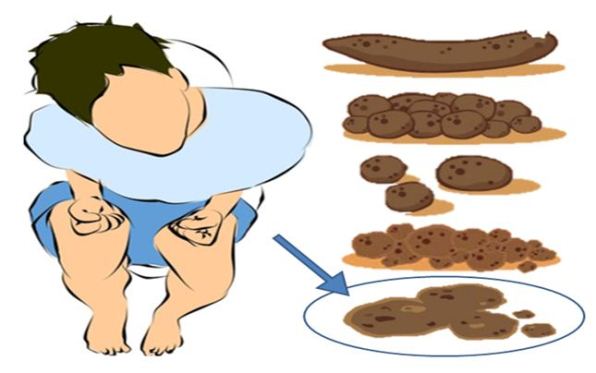
- Also, some healthy children always have very soft stools.
- Other children have firm stools, but are able to pass them without problems.
Constipation occurs when the stool remains in the colon for too long. Too much water gets absorbed by the colon, leaving hard, dry stools.
Constipation may be caused by:
- Ignoring the urge to use the toilet
- Not eating enough fiber
- Not drinking enough fluids
- Switching to solid foods or from breast milk to formula (infants)
- Changes in situation, such as travel, starting school, or stressful events
Medical causes of constipation may include:
- Diseases of the bowel, such as those that affect the bowel muscles or nerves
- Other medical conditions that affect the bowel
- Use of certain medicines
Children may ignore the urge to have a bowel movement because:
- They are not ready for toilet training
- They are learning to control their bowel movements
- They have had previous painful bowel movements and want to avoid them
- They don't want to use a school or public toilet
Lifestyle changes can help your child avoid constipation.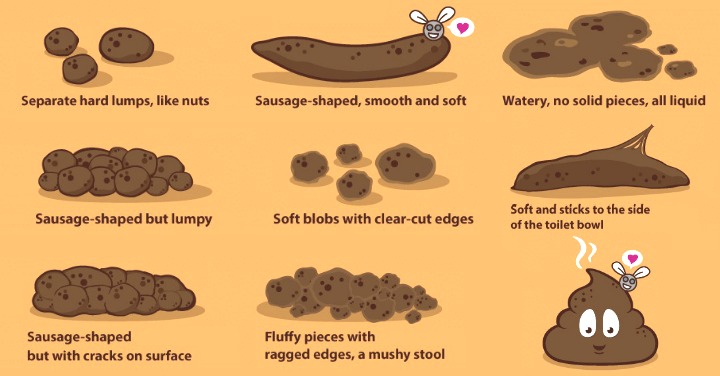 These changes can also be used to treat it.
These changes can also be used to treat it.
For infants:
- Give your baby extra water or juice during the day in between feedings. Juice can help bring water to the colon.
- Over 2 months old: Try 2 to 4 ounces (59 to 118 mL) of fruit juice (grape, pear, apple, cherry, or prune) twice a day.
- Over 4 months old: If the baby has started to eat solid foods, try baby foods with high-fiber content such as peas, beans, apricots, prunes, peaches, pears, plums, and spinach twice a day.
For children:
- Drink plenty of fluids each day. Your child's health care provider can tell you how much.
- Eat more fruits and vegetables and foods high in fiber, such as whole grains.
- Avoid certain foods such as cheese, fast food, prepared and processed foods, meat, and ice cream.
- Stop toilet training if your child becomes constipated. Resume after your child is no longer constipated.
- Teach older children to use the toilet right after eating a meal.

Stool softeners (such as those containing docusate sodium) may help for older children. Bulk laxatives such as psyllium may help add fluid and bulk to the stool. Suppositories or gentle laxatives may help your child have regular bowel movements. Electrolyte solutions like Miralax can also be effective.
Some children may need enemas or prescription laxatives. These methods should be used only if fiber, fluids, and stool softeners do not provide enough relief.
Do NOT give laxatives or enemas to children without first asking your provider.
Call your child's provider right away if:
- An infant (except those who are only breastfed) goes 3 days without a stool and is vomiting or irritable
Also call your child's provider if:
- An infant younger than 2 months is constipated
- Non-breastfeeding infants go 3 days without having a bowel movement (call right away if there is vomiting or irritability)
- A child is holding back bowel movements to resist toilet training
- There is blood in the stools
Your child's provider will perform a physical exam.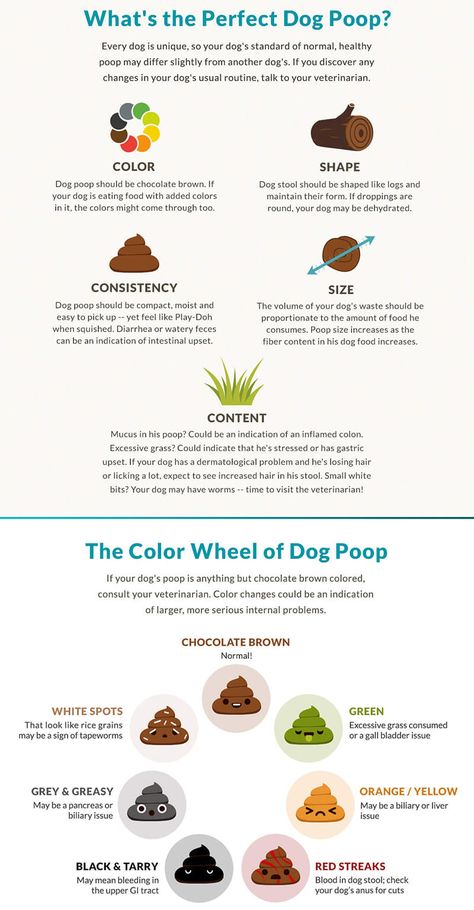 This may include a rectal exam.
This may include a rectal exam.
The provider may ask you questions about your child's diet, symptoms, and bowel habits.
The following tests may help find the cause of constipation:
- Blood tests such as a complete blood count (CBC)
- X-rays of the abdomen
The provider may recommend the use of stool softeners or laxatives. If stools are impacted, glycerin suppositories or saline enemas may be recommended also.
Irregularity of bowels; Lack of regular bowel movements
- Constipation - what to ask your doctor
- High-fiber foods
- Sources of fiber
- Digestive system organs
Kwan KY. Abdominal pain. In: Olympia RP, O'Neill RM, Silvis ML, eds. Urgent Care Medicine Secrets. Philadelphia, PA: Elsevier; 2018:chap 19.
Maqbool A, Liacouras CA. Major symptoms and signs of digestive tract disorders. In: Kliegman RM, St. Geme JW, Blum NJ, Shah SS, Tasker RC, Wilson KM, eds. Nelson Textbook of Pediatrics. 21st ed. Philadelphia, PA: Elsevier; 2020:chap 332.
Nelson Textbook of Pediatrics. 21st ed. Philadelphia, PA: Elsevier; 2020:chap 332.
National Institute of Diabetes and Digestive and Kidney Diseases. Constipation in children. www.niddk.nih.gov/health-information/digestive-diseases/constipation-children. Updated May 2018. Accessed October 14, 2020.
Updated by: Charles I. Schwartz, MD, FAAP, Clinical Assistant Professor of Pediatrics, Perelman School of Medicine at the University of Pennsylvania, General Pediatrician at PennCare for Kids, Phoenixville, PA. Also reviewed by David Zieve, MD, MHA, Medical Director, Brenda Conaway, Editorial Director, and the A.D.A.M. Editorial team.
norm, how many times a day, color
So many experiences are connected with how a newborn baby "walks big". Mom is worried about the frequency of the stool, its color, consistency. So how do you determine if the crumbs are all right with digestion? Perhaps he needs help?
Many mothers know that it is very important to monitor the baby's stool, and during the examination, the pediatrician is always interested in how the baby walks in a big way.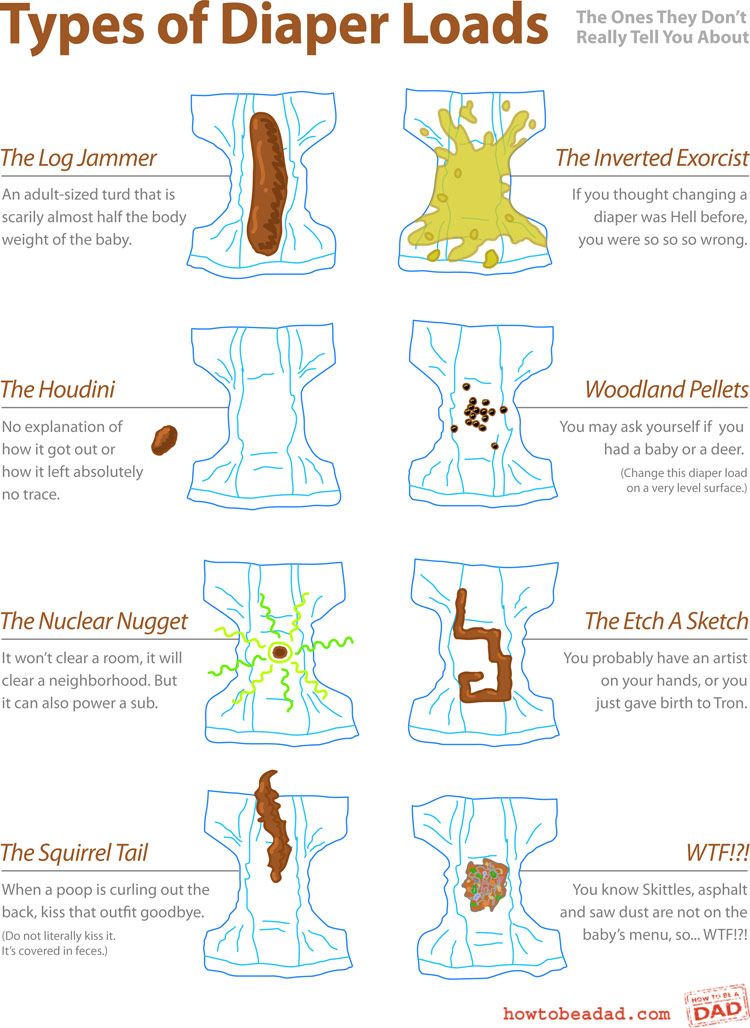 This information is one of the most important points in diagnosing the health of the crumbs. Unfortunately, quite often mothers mistakenly interpret the completely natural and safe states of the baby. And because of these mistakes, they can start unnecessary treatment and worry about the baby for no good reason. So let's figure out how a baby's chair should look like and when to worry and when not.
This information is one of the most important points in diagnosing the health of the crumbs. Unfortunately, quite often mothers mistakenly interpret the completely natural and safe states of the baby. And because of these mistakes, they can start unnecessary treatment and worry about the baby for no good reason. So let's figure out how a baby's chair should look like and when to worry and when not.
Immediately after childbirth
When the baby is in the mother's tummy, he receives all the necessary substances and trace elements through the umbilical cord. The digestive system of the crumbs does not work, but his stomach is not empty. The baby sucks his fingers, opens his mouth and thus swallows a small amount of amniotic fluid. When the baby is born, this substance will be in his intestines and will gradually come out as the baby is attached to the chest and his digestive system begins to work.
So, the first stool of the baby is meconium: dark, plasticine-like feces. So the baby recovers the first day or two. Sometimes it gives him discomfort: the baby worries, cries, pushes, before he manages to go big. However, this is not always the case - many children recover easily, only slightly pushing.
So the baby recovers the first day or two. Sometimes it gives him discomfort: the baby worries, cries, pushes, before he manages to go big. However, this is not always the case - many children recover easily, only slightly pushing.
If everything is in order with the baby, he was put to the breast in time and fed on demand, then his stool gradually changes. On the third or fifth day, the baby has the so-called "transitional stool", partly consisting of meconium, which is still in the gastrointestinal tract, partly from digested colostrum and milk. As a rule, streaks appear first in the meconium mass, then the feces gradually turn yellow. By the end of the first week, the baby's stool usually acquires the features of a normal infant: yellow, rather liquid.
When should you worry? If the baby did not go down in a big way in the first two days, it is necessary to consult a doctor. There are children with individual characteristics who will continue to do this less often than most babies.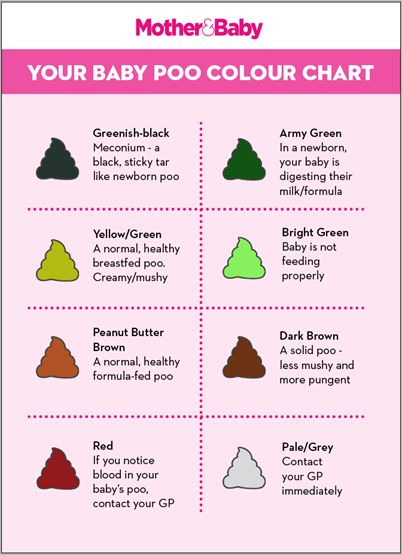 However, the cause of the stool retention should be determined by the doctor. If the crumbs have some kind of problem with intestinal patency, help will be needed immediately, but you should not diagnose your baby without a doctor.
However, the cause of the stool retention should be determined by the doctor. If the crumbs have some kind of problem with intestinal patency, help will be needed immediately, but you should not diagnose your baby without a doctor.
We are at home
On the third or fifth day, the mother receives milk, and the baby has a fairly stable stool by the end of the first week. The literature sometimes says that the stool of newborns is "creamy", and this confuses mothers, who begin to suspect that something is not right with the crumbs. In reality, the stool of a healthy baby is liquid and not always homogeneous. The normal color of feces is yellow and its shades. You may notice lumps, a little mucus - it's not scary. Do not be afraid if the baby's feces have a greenish tint for up to three months due to the immaturity of the liver enzyme systems and the characteristics of bilirubin metabolism, such a condition has the right to be and also does not require treatment.
Many mothers sometimes worry that the baby's stool "suddenly" becomes watery and the baby walks in a big way with abundant gas, a sharp sound. Doctors in this case often suspect lactase deficiency. In reality, things usually go like this. In the period from 3 weeks to a month and a half, the baby has frequent growth spurts, so at certain moments the baby literally “hangs on the chest” to help the mother produce more milk. Within a day or a few, the baby needs to breastfeed more often and longer than before, and the mother begins to suspect that there is not enough milk. As a result, she often begins to shift the baby from one breast to another, and the baby receives mostly "forward" milk, which comes at the beginning of feeding from each breast. This milk is rich in carbohydrates and proteins, the baby is actively growing from it, however, the stool is liquid and gassy because of this milk (sometimes the “result” looks frothy if the baby is held over a pot or basin when he needs to clear out, and the mother can observe the consistency chair). In this situation, there is no need to panic - just the baby does not need to be constantly shifted from one breast to another, fearing that he is starving.
Doctors in this case often suspect lactase deficiency. In reality, things usually go like this. In the period from 3 weeks to a month and a half, the baby has frequent growth spurts, so at certain moments the baby literally “hangs on the chest” to help the mother produce more milk. Within a day or a few, the baby needs to breastfeed more often and longer than before, and the mother begins to suspect that there is not enough milk. As a result, she often begins to shift the baby from one breast to another, and the baby receives mostly "forward" milk, which comes at the beginning of feeding from each breast. This milk is rich in carbohydrates and proteins, the baby is actively growing from it, however, the stool is liquid and gassy because of this milk (sometimes the “result” looks frothy if the baby is held over a pot or basin when he needs to clear out, and the mother can observe the consistency chair). In this situation, there is no need to panic - just the baby does not need to be constantly shifted from one breast to another, fearing that he is starving. Give the baby the opportunity to get "hind" milk, rich in fats, which will not cause flatulence and stay longer in the intestines.
Give the baby the opportunity to get "hind" milk, rich in fats, which will not cause flatulence and stay longer in the intestines.
In this situation (when the baby suddenly begins to clearly suck more milk), the mother may feel insecure and start drinking lactic teas. From this, more carbohydrates again begin to flow into her milk and the baby's stool becomes more liquid and with gases.
Similar problems due to "front" milk occur in the case of improper attachment to the breast, as a result of which the baby swallows the air and interrupts feeding itself, or simply cannot get "hind" milk. The best way out in this situation is to consult with a breastfeeding specialist to correct the application technique and stop panicking that the baby "does not have enough milk."
In short, don't worry if your baby has problems with this type of stool. Of course, the flora of his intestines is unstable, it is just beginning to be established - it takes at least three to four months.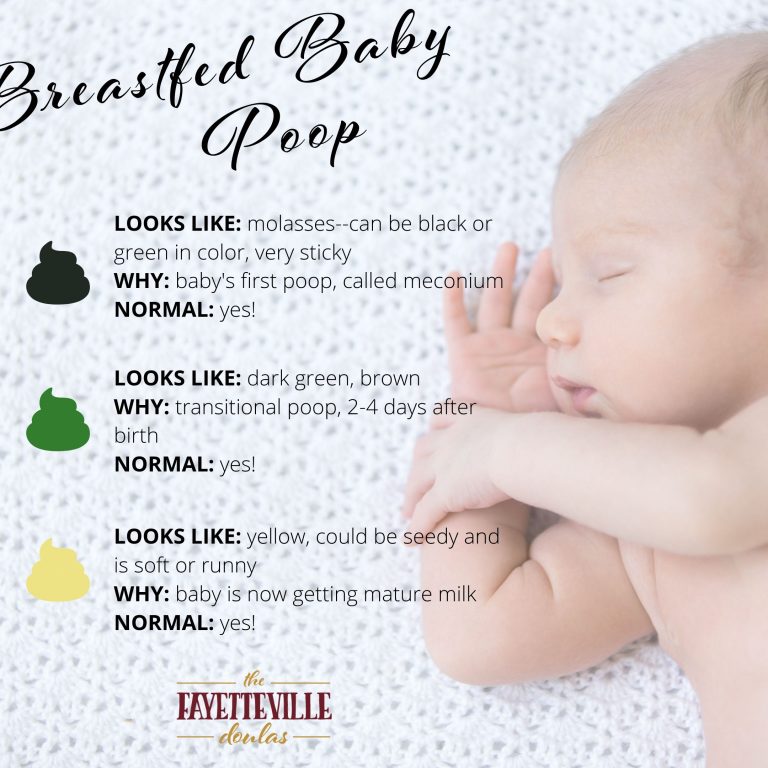 Your task is simply to feed the baby on demand and correctly and not to rush to treat him for imaginary diseases.
Your task is simply to feed the baby on demand and correctly and not to rush to treat him for imaginary diseases.
Delayed stool
Mothers worry not only about the appearance of the stool, but also because of its periodicity. How often should the baby "do things"? Normally, the baby walks in a big way several times a day, usually after feeding. However, in some children, the norm may be a chair and once a day, and even once every few days. Typically, these children have an anatomically weak anterior abdominal wall and intestinal motility. Such a periodicity of the stool can be considered the norm, if the baby still walks more regularly, the stool is of normal consistency and, in general, the baby is cheerful and cheerful and does not suffer from colic. It's not worth worrying. However, if the baby is allergic, then you need to do everything possible so that he goes to the toilet at least once a day. Atopic dermatitis is much more severe if the baby does not empty the intestines often enough - consult a doctor about this.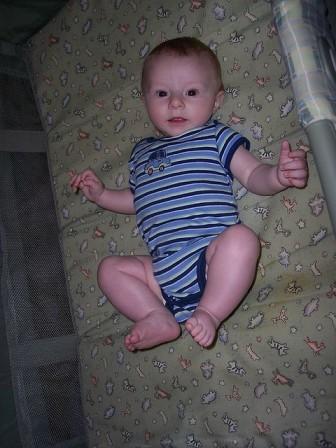
Babies also have physiological delays in stool at the age of one and a half to five months. Here it is important to monitor the condition of the baby. If he experiences discomfort, you should consult a doctor. Children can hold back their stools for psychological reasons, just as adults sometimes cannot go to the toilet if they are nervous. Do not panic because of a one-time problem, but if the problem persists or recurs, consult your doctor.
However, in babies there are not just "delays" of the stool, but also real constipation. Constipation is called not only when the baby does not go to the toilet at all, but also feces "peas", overdried, when a bowel movement is difficult. What could be the reason?
Regular constipation is usually caused by improper feeding of the crumbs. However, this condition can also occur if the mother does everything right, but she has her own health problems, for example, with the thyroid gland. Medications can also be the cause of constipation.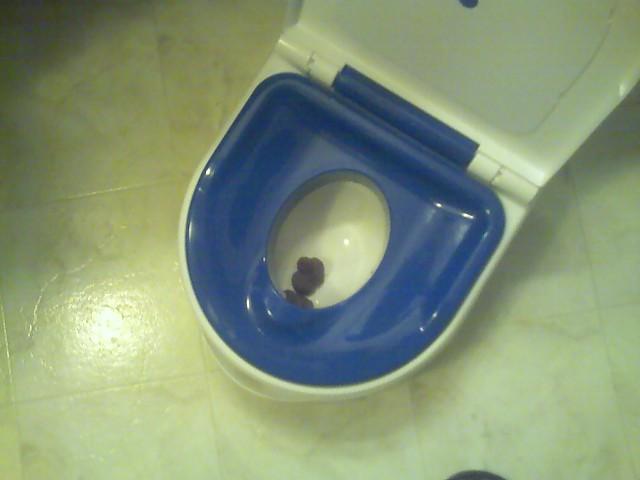 For example, intestinal weakness is provoked by all kinds of sedative mixtures and drugs, which are often prescribed to children by neurologists at an early age. Even cough medicines or tooth gels can cause constipation. In any case, the doctor should deal with this. You should not give your baby medicines and laxatives on your own, or act on it mechanically with an enema or gas tube. It is better to discuss with the doctor the issues of feeding, drug treatment and the lifestyle of the baby - so you can understand the problem.
For example, intestinal weakness is provoked by all kinds of sedative mixtures and drugs, which are often prescribed to children by neurologists at an early age. Even cough medicines or tooth gels can cause constipation. In any case, the doctor should deal with this. You should not give your baby medicines and laxatives on your own, or act on it mechanically with an enema or gas tube. It is better to discuss with the doctor the issues of feeding, drug treatment and the lifestyle of the baby - so you can understand the problem.
Weaning time
Of course, when you start to introduce complementary foods, the baby's stool pattern changes. First of all, you need to remember that the task of the first complementary foods (at 5, 6 months) is not to feed, but to help adapt to new tastes, to new food. Give the baby complementary foods in the amount of "lick" and only gradually move on to doses "with a marigold" or "half a teaspoon". Recall that you need to introduce one product into the diet of crumbs so that you can understand how and what the baby reacts to. Quite often, as soon as we give the baby “with a fingernail” some food, it is not digested - we find the product in the feces almost in its original form. Within one or two days, this is normal, the baby’s body has not figured out the new component in the stomach, but if this continues on the third day, the product must be removed from the diet, since it is obvious that the baby is not yet ready to accept it. You need to take a break for a week or two, without offering the baby anything but the breast, then try again with another product.
Quite often, as soon as we give the baby “with a fingernail” some food, it is not digested - we find the product in the feces almost in its original form. Within one or two days, this is normal, the baby’s body has not figured out the new component in the stomach, but if this continues on the third day, the product must be removed from the diet, since it is obvious that the baby is not yet ready to accept it. You need to take a break for a week or two, without offering the baby anything but the breast, then try again with another product.
The baby's body can also react more violently, for example, with loose stools and abdominal pain, and sometimes with allergies. In this case, you also need to cancel the product and keep the baby breastfed so that the gastrointestinal tract calms down.
When you introduce protein to your baby, he may react with constipation. To avoid this, you need to remember simple rules. Proteins require more liquid, so if this is your baby's first food (for example, cottage cheese), give him more breast milk. If you started introducing proteins when the baby is already drinking liquid, provide him with a drink. Do not worry about the fact that the introduction of new products has to be postponed - nothing terrible will happen to the baby. And be especially calm about the opinion that at 6-7 months the child needs to be given meat products so that he grows well. Not all children are able to absorb such a protein; for many, even a homogenized meat product at this age will lead to constipation and overload the kidneys. Let the baby eat breast milk for a longer time and receive vegetables and fruits as complementary foods - this way you will avoid many problems with the stool.
If you started introducing proteins when the baby is already drinking liquid, provide him with a drink. Do not worry about the fact that the introduction of new products has to be postponed - nothing terrible will happen to the baby. And be especially calm about the opinion that at 6-7 months the child needs to be given meat products so that he grows well. Not all children are able to absorb such a protein; for many, even a homogenized meat product at this age will lead to constipation and overload the kidneys. Let the baby eat breast milk for a longer time and receive vegetables and fruits as complementary foods - this way you will avoid many problems with the stool.
In general, mothers' concern about baby's stool is quite justified: after all, this is an important diagnostic symptom that allows you to understand a lot about the baby's condition. However, it must be remembered that not all situations require intervention, and most problems can be solved simply by correcting feeding mistakes.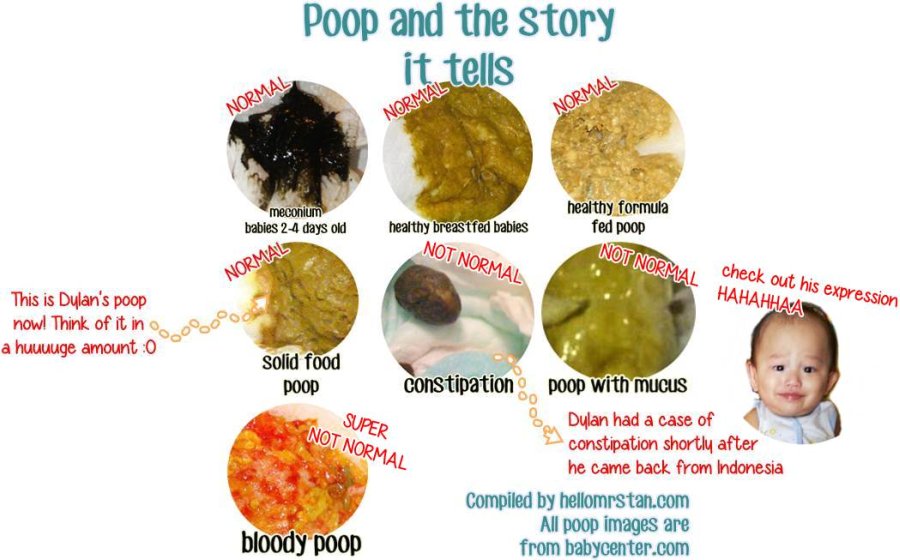 Do not rush to treat the baby and resort to medication, start with a diet.
Do not rush to treat the baby and resort to medication, start with a diet.
Text: Anna Babina
Consultant: Olga Ivanovna Tkach, pediatrician, Center for Traditional Obstetrics
Constipation in children under one year old
Usually, parents of babies are worried about the exact opposite problem - too frequent stools. Therefore, not everyone immediately understands what to do if a baby under one year old has constipation.
Gastroenterologist, hepatologist at GMS Clinic Sergey Vyalov gave an interview to the Internet portal parents.ru and spoke about constipation in children under one year old.
Introduction
Constipation, also known as diarrhea, stool retention, discolia, caprostasis, difficulty in emptying the bowel is not a universal condition with unambiguous characteristics. Each person, including a child, has his own indicators of the norm and deviations from it, associated with age, intestinal microflora, diet, state of mind and hormonal background, concomitant diseases.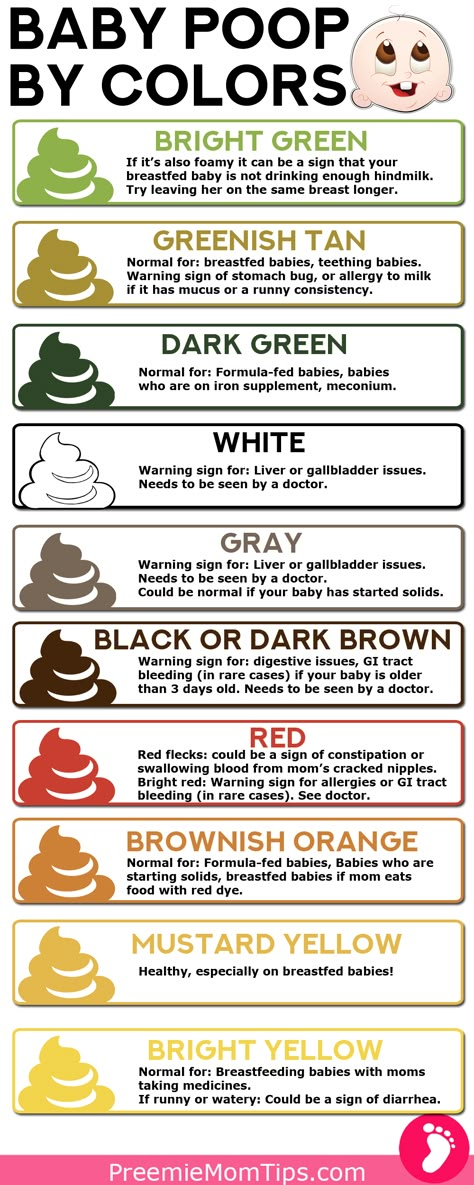 Yet there are a few common points of reference.
Yet there are a few common points of reference.
What is constipation?
Specialists diagnose constipation if the baby does "big" things:
- regularly and without problems, but passing dry and hard stools;
- with difficulty - the child has to push, the feces do not come out on the first try;
- less than 5 times per day.
In the first six months of life, constipation is a rather rare occurrence, rather, on the contrary, in the period from 0 to 6 months, 6-10 bowel movements per day are considered the norm. Breastfed babies have more frequent bowel movements, while artificial babies have less.
Up to 6 months constipation is rare
Usually, parents of babies in the first months of life are alarmed by the condition opposite to constipation - too frequent bowel movements. But in a baby, regardless of whether he eats breast milk or formula, the intestines should work exactly like this - in a mode that is considered diarrhea for older children and adults.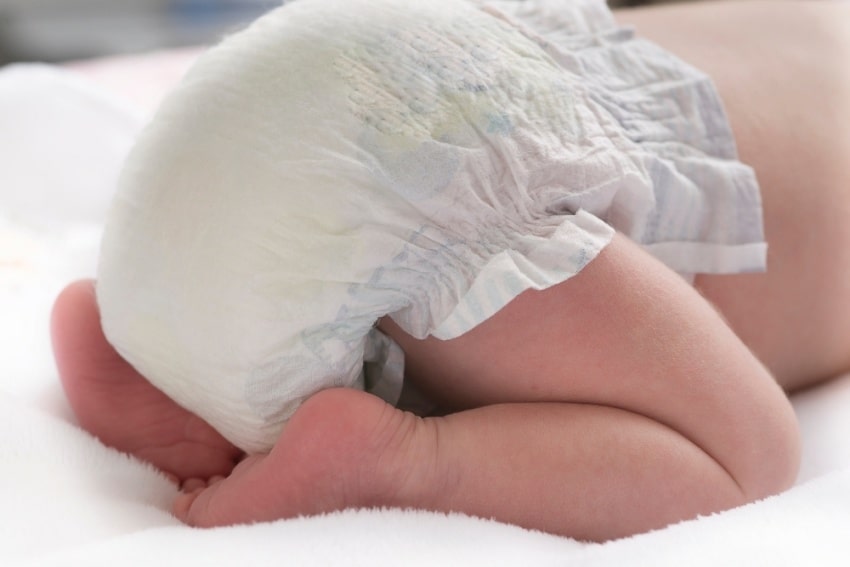
There should be no other option, at least until the introduction of complementary foods at 4-6 months. After all, the baby receives mostly liquid food, the waste products of which have the same consistency and leave the intestines without encountering any obstacles on the way - the baby has not yet learned to control the sphincter that restrains the release of feces.
The baby's intestines have just begun to "get acquainted" with microorganisms that come from mother's milk, from her skin (the baby licks the nipple), from the environment. Far from all new "partners" are accepted: there are rejected ones, those who have not taken root, and so on. Checking and rejection are accompanied by loose, unstable stools.
Too frequent bowel cleansing does not need correction and treatment if the child is gaining weight and developing properly. Normal appetite and sleep, gas, absence of fever and other signs of illness indicate that parents have nothing to worry about. If the mother of a baby, tired of changing diapers 10 times in one day, wants to change the situation and asks the doctor to prescribe fixing medicines for the baby, then, unwittingly, she will doom her baby to chronic constipation.
If the mother of a baby, tired of changing diapers 10 times in one day, wants to change the situation and asks the doctor to prescribe fixing medicines for the baby, then, unwittingly, she will doom her baby to chronic constipation.
Not according to the rules
And yet, in the first 6 months, constipation in infants is not excluded. It can be called:
- microflora transmitted from mother;
- insufficient fluid volume;
- stress.
Let's say a woman has too many methane-producing bacteria in her stomach and intestines that cause constipation. They grow rather slowly, ferment, releasing carbon dioxide, which contributes to flatulence and bloating. With this deviation, the woman lives, adapted and learned to solve the problem with the intestines in one way or another. Noticing the same thing in a child, she decides that the baby has inherited her features and "saves" him with the same means, making a mistake. Babies should not be given laxatives, especially those containing senna.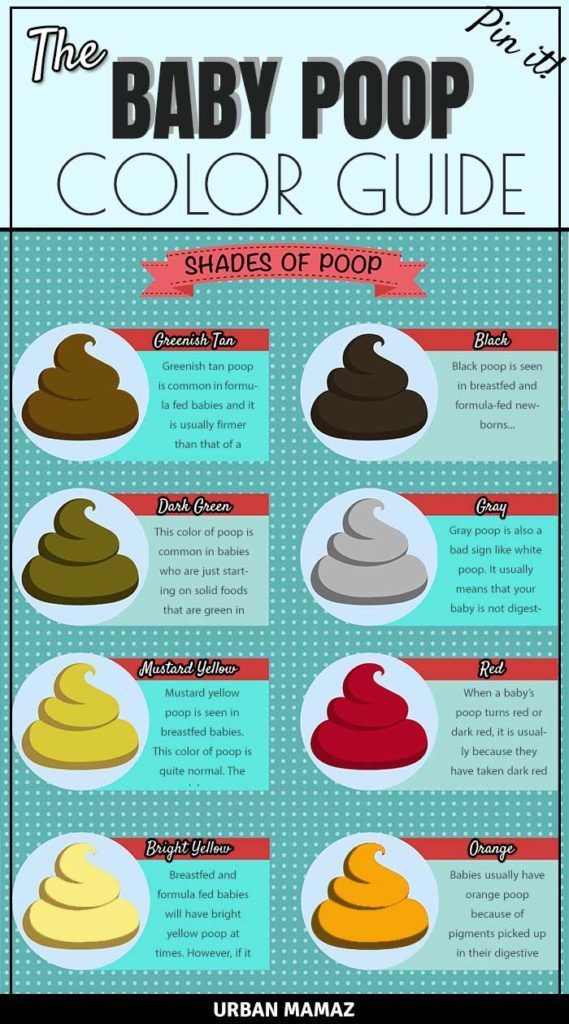 The baby's body gets used to such drugs too quickly and without them it can no longer cleanse the intestines.
The baby's body gets used to such drugs too quickly and without them it can no longer cleanse the intestines.
Constipation in a baby up to 6 months is also provoked by a lack of fluid and hormonal fluctuations. At 6 months, the baby should receive a lot of moisture - about 140 ml per kilogram of weight per day. A breastfed child gains this rate from mother's milk and does not need additional sources of liquid (but only if there is no predisposition to constipation). Little artificers are soldered from the moment they switch to a mixture.
If a woman is tense or nervous, then her level of the stress hormone cortisol rises. Through breast milk, saliva or sweat, the substance enters the baby's body and also provokes constipation.
Even if the mother does not breastfeed the baby, the constipating microorganisms sooner or later get to the gastrointestinal system of the crumbs and make negative changes in it.
Constipation after weaning
The kid is growing, improving his skills, and it's time to introduce him to new foods.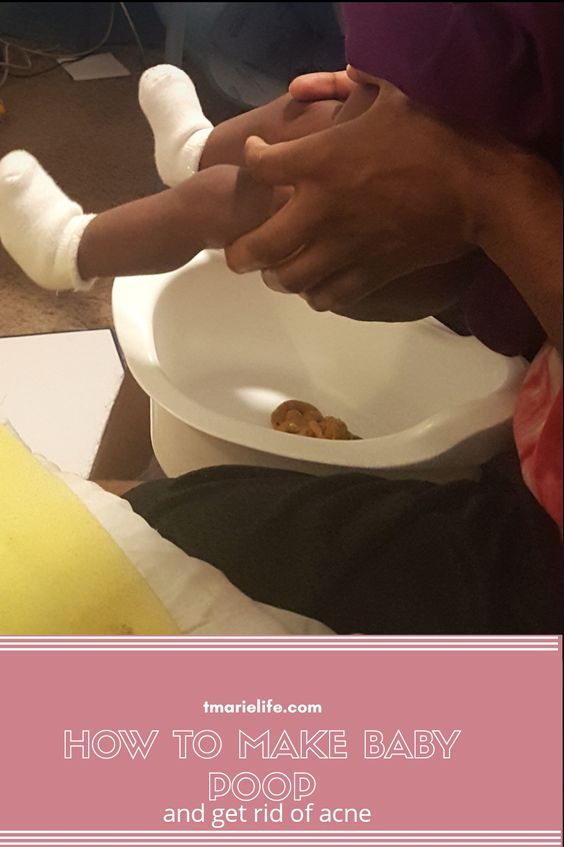 These circumstances, on the one hand, help to establish peristalsis, and on the other hand, increase the risk of constipation.
These circumstances, on the one hand, help to establish peristalsis, and on the other hand, increase the risk of constipation.
By six months, the baby is already trying to control defecation, because he realized that after it there are unpleasant sensations - itching, burning and other discomfort in the areas where the feces get. In order not to experience discomfort, the child tries to restrain the urge. At first, he does not succeed, because the rectum has already learned how to work - reflexively contract and push out waste. And after a couple of months, everything works out, the baby wins and enters the path leading to chronic constipation. To get the baby out of this vicious circle, the mother must minimize the duration of the baby's skin contact with feces and expand the baby's diet by mastering complementary foods.
Proteins, fats and carbohydrates that are part of the products are absorbed in the small intestine, and do not reach the large intestine, where feces are formed.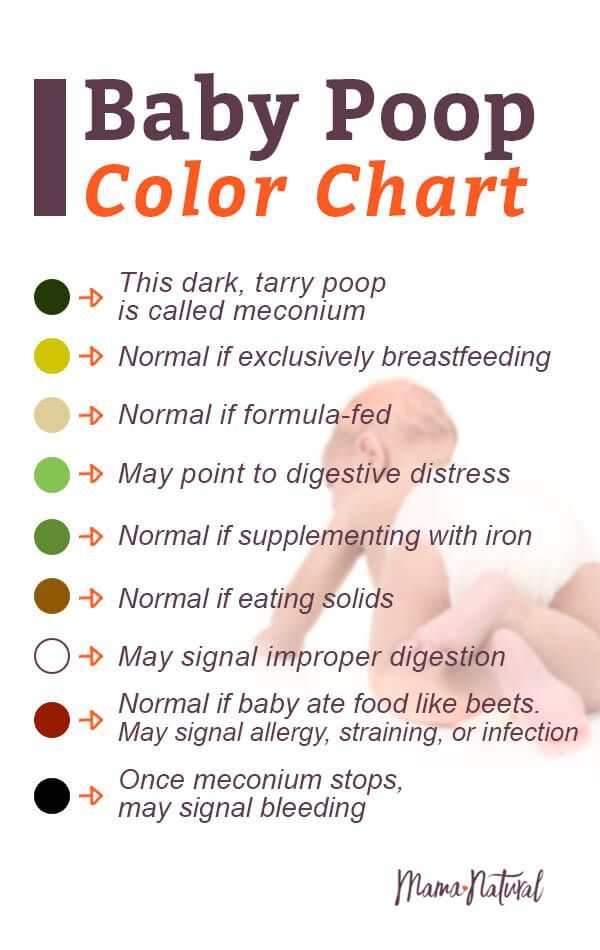 What can not be said about fiber. While the baby is drinking breast milk or formula, this component of the dishes is not familiar to him. Even if a nursing woman herself consumes a lot of plant foods, the baby does not get anything. Fiber, as already noted, is not absorbed in the intestines, does not enter the bloodstream, which means that it is not in breast milk. For the first time, a baby gets fiber with complementary foods by trying its first 25 grams of mashed potatoes from zucchini, carrots and other vegetables. Plant fibers literally attract all waste to themselves, as a result, fecal masses are formed, which help the intestines to master the correct peristalsis. There are a lot of muscles in this section of the gastrointestinal tract, in the intestines, they must learn to consistently contract - tighten and relax in order to squeeze waste out.
What can not be said about fiber. While the baby is drinking breast milk or formula, this component of the dishes is not familiar to him. Even if a nursing woman herself consumes a lot of plant foods, the baby does not get anything. Fiber, as already noted, is not absorbed in the intestines, does not enter the bloodstream, which means that it is not in breast milk. For the first time, a baby gets fiber with complementary foods by trying its first 25 grams of mashed potatoes from zucchini, carrots and other vegetables. Plant fibers literally attract all waste to themselves, as a result, fecal masses are formed, which help the intestines to master the correct peristalsis. There are a lot of muscles in this section of the gastrointestinal tract, in the intestines, they must learn to consistently contract - tighten and relax in order to squeeze waste out.
The next new product should be introduced one month after the previous one. The novelty is likely to cause more frequent and loose stools at first.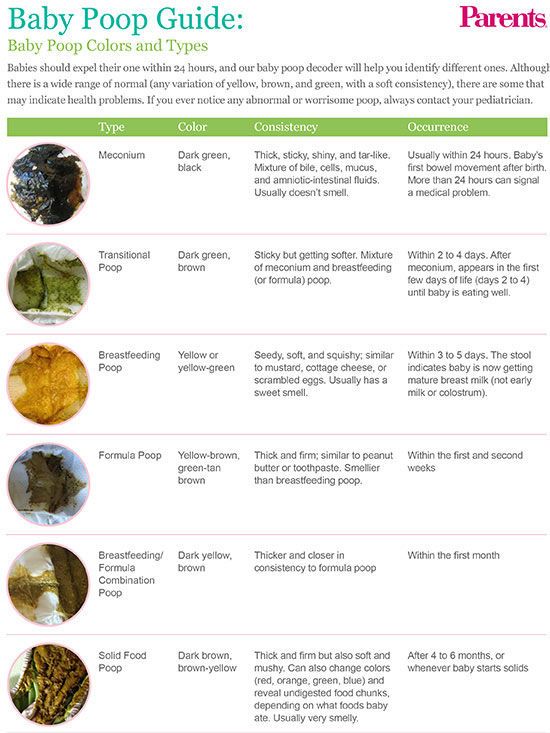 If it does not have a green color and does not foam, there is no need to run to the doctor and ask to prescribe fixatives. Be patient, after a while the innovation will be mastered and will bear fruit. Instead of liquid and shapeless yellow-white feces, you will see brown feces that have formed.
If it does not have a green color and does not foam, there is no need to run to the doctor and ask to prescribe fixatives. Be patient, after a while the innovation will be mastered and will bear fruit. Instead of liquid and shapeless yellow-white feces, you will see brown feces that have formed.
Special constipation
There are other causes of constipation in babies. Unfortunately, they are much more difficult to deal with, since these are developmental pathologies, diseases, and injuries.
Acute constipation. It develops for anatomical reasons, for example, due to obstruction of the large intestine, or during intussusception - the introduction of one part of the intestine into another, which causes blockage of the lumen. Against the background of complete well-being, the baby suddenly becomes restless, cries, refuses to eat. The attack ends as unexpectedly as it began, but after 3-5 minutes it repeats and intensifies: one or two times vomiting appears with an admixture of green bile.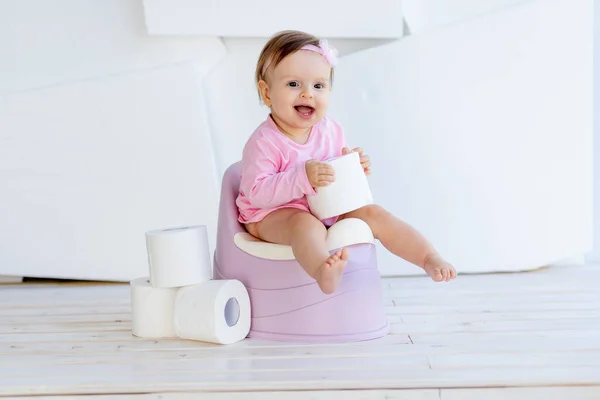 If the stool passes, then blood impurities are visible in it. After 5–6 hours, the stool stops, and bloody discharge comes out of the rectum. At the same time, the baby's stomach is soft. The temperature is usually normal. The child may even lose consciousness. With such symptoms, you need to call an ambulance.
If the stool passes, then blood impurities are visible in it. After 5–6 hours, the stool stops, and bloody discharge comes out of the rectum. At the same time, the baby's stomach is soft. The temperature is usually normal. The child may even lose consciousness. With such symptoms, you need to call an ambulance.
Hirschsprung disease. It is based on a violation of the innervation of the large intestine - the central nervous system cannot control this section of the gastrointestinal tract. As a result, processed food accumulates in the intestines. The picture of the disease is quite diverse. If only the short part of the intestine is affected, then constipation forms gradually, and it is possible to do without surgical intervention for quite a long time. When a longer segment is affected, the absence of stool is fraught with a serious condition and immediate surgical intervention is required.
infectious attack. If in the first months of life the baby suffered an intestinal infection, the nerve cells in the large intestine may die, which will lead to a delay in the act of defecation, accumulation of feces and the development of constipation. With dysentery, the so-called toxic megacolon is possible (a sharp expansion of the colon). The child develops impaired consciousness and repeated vomiting. The abdomen increases sharply due to a greatly enlarged intestine. The complication requires emergency surgical care.
With dysentery, the so-called toxic megacolon is possible (a sharp expansion of the colon). The child develops impaired consciousness and repeated vomiting. The abdomen increases sharply due to a greatly enlarged intestine. The complication requires emergency surgical care.
Problems with the CNS. Injuries during childbirth and the syndrome of infantile cerebral palsy also affect the functioning of the gastrointestinal tract, as they are associated with various complications, such as impaired swallowing, regurgitation, and vomiting.
Vasculitis. Vascular inflammation extends to the nerve plexuses and sensitive cells located in the intestinal wall.
Disorders in the work of the endocrine system. With hypothyroidism (lack of thyroid function), the movement of contents through the intestines slows down. With dysfunction of the parathyroid glands, constipation occurs due to a violation of mineral metabolism, with diabetes mellitus it becomes the result of damage to the nerve plexuses of the intestine or dehydration of the child's body.